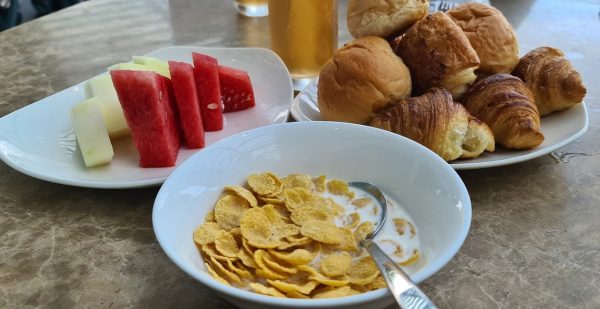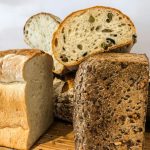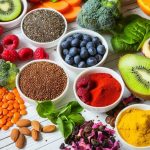Are you still sold on the idea that whole wheat breads, cereals and pastas are your best sources of fiber and the answer to good health?
I’m not. And I’ll bet your reaction this statement is the same as many of my patients.
“What the heck, Doc,” they say. “Our ancestors ate grains all the time. What’s your problem?”
It’s not my problem. It’s everyone’s.
Today’s whole grains have been scientifically engineered and hybridized. And most of them contain gluten.
I’m sure you’ve heard of gluten before. It’s a protein that can trigger inflammation – an underlying factor in so many chronic diseases like joint and bowel disorders, heart disease and other health problems.
And here’s an interesting little tidbit.
Cases of gluten intolerance, celiac disease, irritable bowel syndrome and other health issues have skyrocketed since the modernization of wheat. In fact, celiac disease alone is at least four times more common today than it was 60 years ago.
This is What’s Hiding in Your Bread, Cereals and Pastas
That’s because today’s wheat hasn’t just been re-engineered and modernized. It’s also frequently sprayed with toxic chemicals like glyphosate, the poison in Roundup that kills weeds.
Yes. That’s right.
Farmers here in the U.S. often drench their wheat crops in glyphosate a week or two before harvest. This is a quick and easy way for them to dry the wheat out. It also leaves high residual levels of glyphosate in the wheat used to make the breads, cereals and pastas you eat.
And today there is plenty of evidence that glyphosate might just be fueling gluten intolerance and celiac disease.
Here are just a few ways glyphosate can affect your health:
- It destroys healthy strains of bifidobacteria and lactobacillus. These two types of bacteria are necessary to modify gluten in a way that makes it less allergenic. When glyphosate depletes them, highly allergenic gluten fragments are free to wreak havoc on your body and digestive tract.
- At the same time, glyphosate promotes an overgrowth of some very nasty and unhealthy bacteria, like e. coli and c. difficile. Both of these can greatly add to intestinal distress, nausea, abdominal pain and severe diarrhea.
- Glyphosate disrupts certain liver enzymes that impair your ability to process fats in the gut. That only adds to the gluten-related digestive complaints that may plague you.
- Additionally, it impairs your body’s ability to detoxify itself. This means it can cause the toxic load in your body to build up over time. Eventually, the accumulation of toxins may reach a tipping point.
Get Off of the Whole-Wheat and Gluten/Glyphosate Merry-Go-Round
If you have celiac disease, IBD or are diagnosed gluten intolerant, steer clear of any foods that contain wheat, spelt, kamut, barley, semolina, durum or rye. You should also avoid oats. (Oats don’t contain gluten, but are often contaminated with gluten in the field or during storage or processing.)
You can use amaranth, buckwheat, millet and quinoa products as healthier alternatives.
Plus, if you mainly eat grains for fiber, there are healthier alternatives.
Lentils, beans and other legumes are great sources of fiber. You’ll find a hefty 15 or more grams of fiber in a single cup of cooked lentils, black beans or split peas. Chickpeas, lima beans, navy beans… all of them are extremely high in fiber.
Avocados, artichokes and green peas all have a high fiber content. Brussels sprouts, turnip greens, broccoli and acorn squash contribute to your daily fiber intake too.
I also recommend eating berries of all kinds to add more fiber to your diet, especially blackberries, raspberries and blueberries. If you’re not fond of berries, coconut, pears, apples, apricots and figs also contain appreciable amounts of fiber.
In the meantime, it’s important to watch out for other glyphosate-laden foods. Products that include any type of corn or soy fall into this category. This includes foods containing high fructose corn syrup, corn meal, corn oil, soybean oil, soy lecithin and other “corn” or “soy” related ingredients.
It’s also a good idea to take a daily probiotic to restore a naturally-healthy balance to your gut microbiota… especially if you’ve been eating a lot of whole wheat products.
Look for a formula that contains bifidobacteria, lactobacillus and other strains of healthy bacteria. The higher the colony count, and the more live strains involved, the better off you’ll be. Just make sure to take it daily.
SOURCES:
Rubio-Tapia A, Kyle RA, Kaplan EL, Johnson DR, Page W, Erdtmann F, Brantner TL, Kim WR, Phelps TK, Lahr BD, Zinsmeister AR, Melton LJ 3rd, Murray JA. Increased prevalence and mortality in undiagnosed celiac disease. Gastroenterology. 2009 Jul;137(1):88-93.
Samsel A, Seneff S. Glyphosate, pathways to modern diseases II: Celiac sprue and gluten intolerance. Interdiscip Toxicol. 2013 Dec;6(4):159-84.




